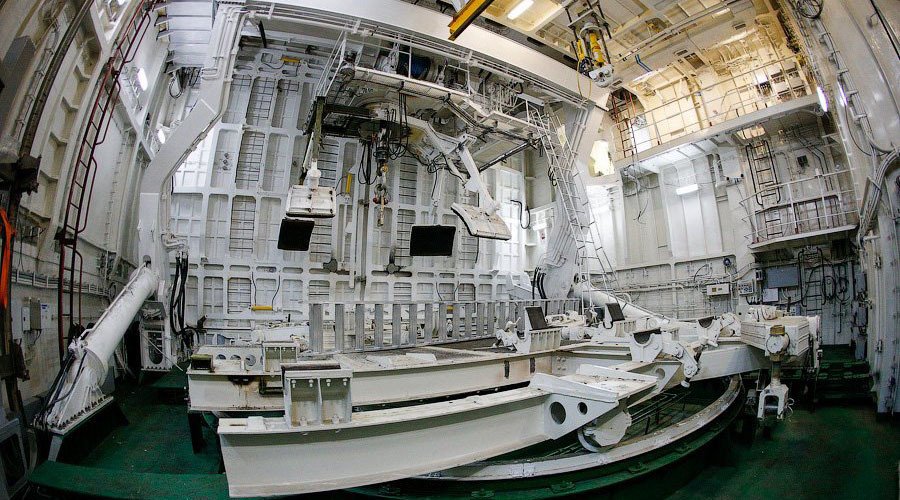Pentagon closely watching Russian ‘spying’ vessel off US coast – reports

A Russian oceanographic research ship commissioned earlier this year has made it to the Caribbean, keeping the Pentagon on its toes. America’s intelligence community appears to believe the vessel is collecting data from underwater cables and spying on the US nuclear submarine fleet.
The Yantar (Amber) oceanographic vessel of the Russian Navy - on a long-distance solo voyage across the northern Atlantic, passing Canada, to the islands of the Caribbean - has alarmed Pentagon, which suspects the high-tech ship is collecting intelligence on US nuclear submarines based at Kings Bay, Georgia.
On September 1, according to a blog about underwater military activities called ‘7 Feet Beneath the Keel’, the Yantar’s location was reported some 150km north of the Turks and Caicos Islands in the Atlantic Ocean.

The Russian ship remains in international waters, with the Pentagon tracking it constantly, according to the Washington Free Beacon (WFB), citing an unnamed official, who maintains the Yantar is equipped with “deep-sea surveillance craft and cable-cutting equipment.”
Another senior defense official told Fox News that US oceanographic ships perform exactly the same activities near Russian shores.
“Of course we do. What do you think all those ‘oceanographic ships’ are doing? Studying whales?” he said.
One more unnamed Pentagon source told WFB that the Russian vessel was busy doing its part of an underwater reconnaissance program to “identify undersea communications trunk lines and nodes,” finding underwater sensors, submarines’ training areas and transit lanes to European shores.
A few days earlier, Pentagon spokesman Captain Jeff Davis said the US respected “the freedom of all nations to operate military vessels in international waters in accordance with international law." At the time he was referring to the reports of Chinese navy ships seen in the Bering Sea for the first time.
It’s been reported that the Yantar is heading to Cuba, where Russian intelligence ships have docked before. Russian Navy intelligence vessel the Viktor Leonov was for example present in Havana harbor in January, when an American delegation arrived to Cuba to put an end to half a century-long embargo blockade.
READ MORE: Russian spy ship in Havana ahead of US delegation’s historic visit
Just like the Viktor Leonov, the Yantar is part of Russia’s Northern Fleet.
The Yantar made the colors in May 2015. She was built in Russia’s European exclave of Kaliningrad. The vessel is 108 meters long and is equipped with a unique on-board scientific research complex for “acoustic, biological, physical, and geophysical surveys,” Sputnik news agency reported on May 23.

“There are no similar complexes anywhere,” said Aleksey Burilichev, the head of the Chief Directorate of Deep-sea Research at the Russian Defense Ministry.
The Yantar’s principal tasks are deep-water research and submarine rescue operations. The ship carries two deep submergence vehicles that are in the process of being tested.
http://t.co/70Y5ssoAkI
Photos of the Rus' DSV carried on Yantar' as she wanders down East Coast pic.twitter.com/vKNHlIxZCE
— RussianNavyBlog(ret) (@russiannavyblog) August 30, 2015A similar oceanographic vessel is planned for construction for Russia’s Pacific Fleet; it will be named Almaz (Diamond).
















